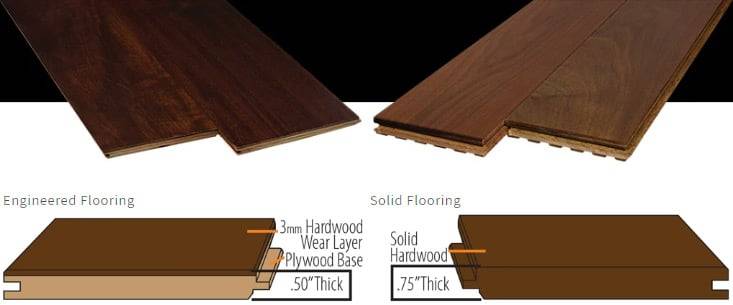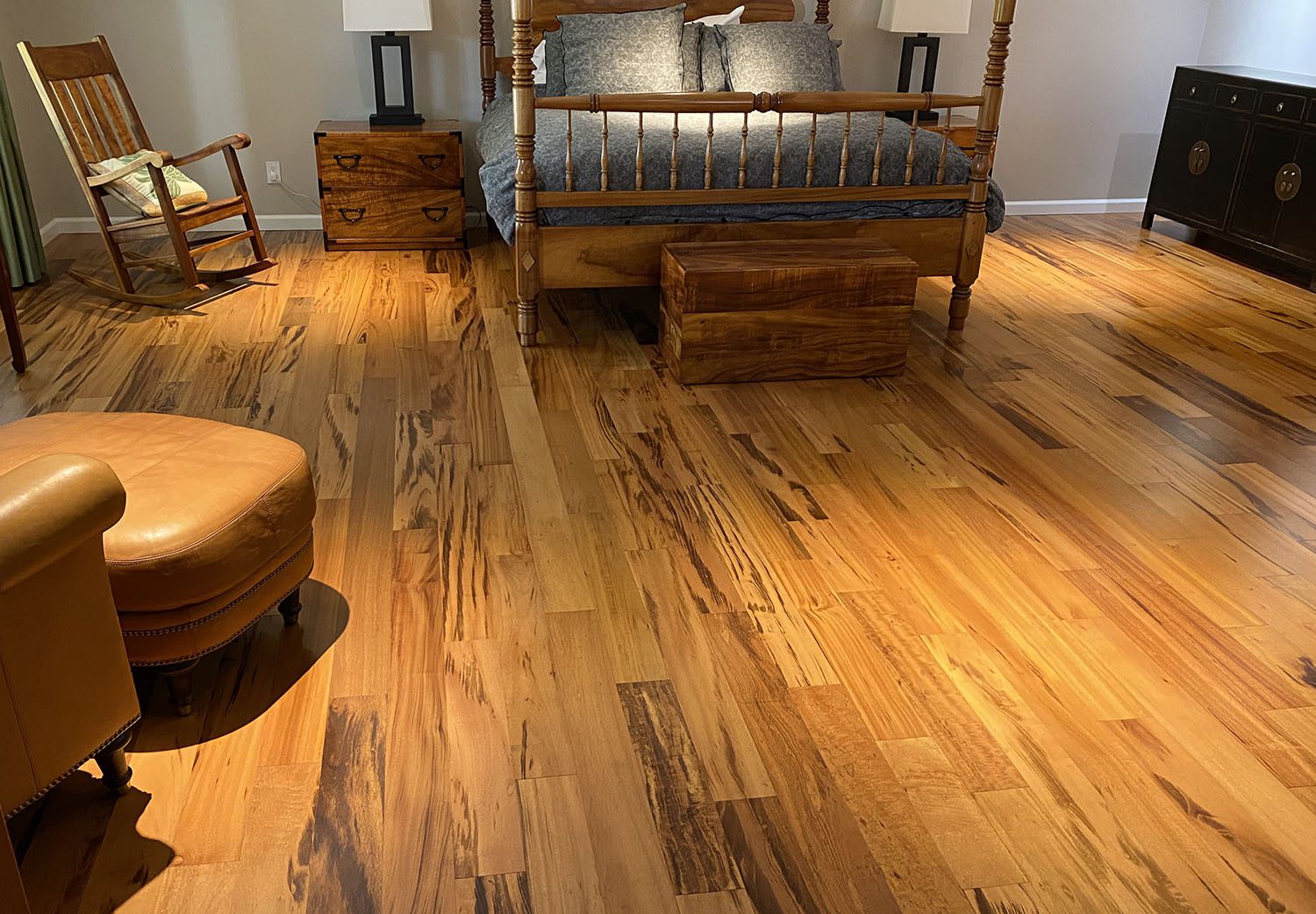Engineered hardwood flooring is a type of flooring made from real wood with a top wear layer and plywood core and back layer. It’s an attractive alternative to solid hardwood flooring because it’s often more durable, less susceptible to changes in humidity and temperature, and can be more cost-effective.
Structure
Engineered hardwood is made up of multiple layers, which typically include:

Top Layer:
The top layer is a veneer of real hardwood. This is the part of the flooring that is visible when it is installed. This layer can vary in thickness and is usually made from popular wood species like Ipe, Brazilian Cherry, or Tigerwood.
Core Layers:
Beneath the veneer are several layers (usually three to twelve) of plywood. These layers are bonded together under heat and pressure in a cross-grain configuration. This construction is what makes engineered wood so strong. The cross-grain setup of the layers helps reduce the wood’s natural tendency to expand, contract, cup or twist with changes in humidity and temperature.
Back Layer:
This is the bottom layer of the plank which provides additional stability. It’s often made of plywood or similar material.
Manufacturing Process
The manufacturing process of engineered hardwood flooring generally involves the following steps:
Selection of Hardwood Veneer:
The process begins by selecting the species of wood for the top layer. This can be any hardwood, like Ipe, Brazilian Cherry, or Tigerwood and will define the appearance of the flooring.
Preparation of Core Material:
The core layers are then prepared. These layers are typically made of plywood or high-density fiberboard, although some manufacturers may use other types of wood. The layers are cut to the desired dimensions and prepared for bonding.
Bonding:
The layers of wood are then bonded together. This is usually done using a strong adhesive under high heat and pressure. The layers are arranged in a cross-grain configuration, which helps to enhance the structural integrity of the flooring and reduce the likelihood of warping.
Veneer Application:
Once the core layers have been bonded, the hardwood veneer is applied to the top. Again, this is usually done using a strong adhesive. The veneer is carefully aligned to ensure a consistent grain pattern.
Finishing:
After the layers have been bonded and the veneer applied, the flooring is sanded to ensure a smooth surface. Then it is finished with a protective layer like aluminum oxide, oil, or polyurethane, which can add gloss and protect the flooring from scratches and other damage.
Installation
Engineered hardwood can be installed in several ways including nailing, gluing, or floating, making it adaptable to many types of sub-floors including concrete.
Engineered hardwood flooring provides the beauty of real wood flooring, but with enhanced stability and often a lower price point. Its structure allows it to withstand areas with higher moisture or temperature changes better than traditional hardwood.
However, it’s important to note that the lifespan of engineered hardwood flooring can vary greatly depending on the thickness of the top veneer layer, as it determines the number of times the floor can be refinished.
